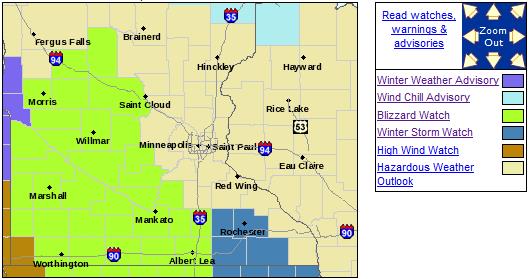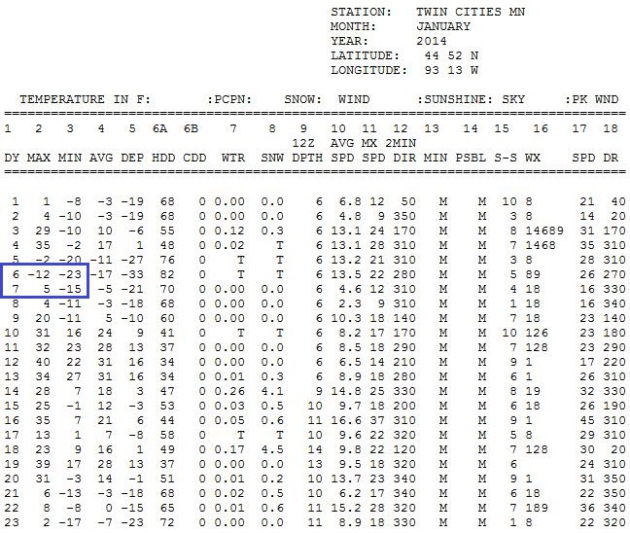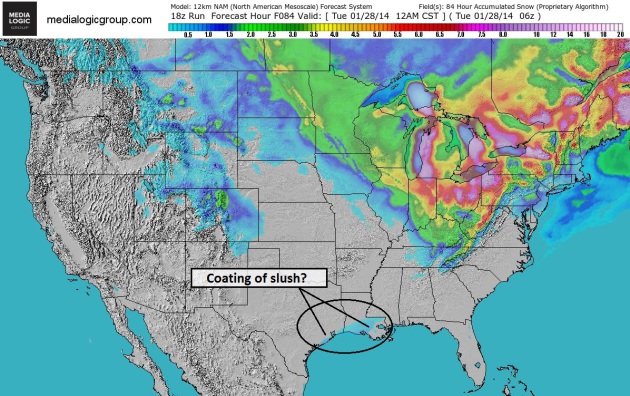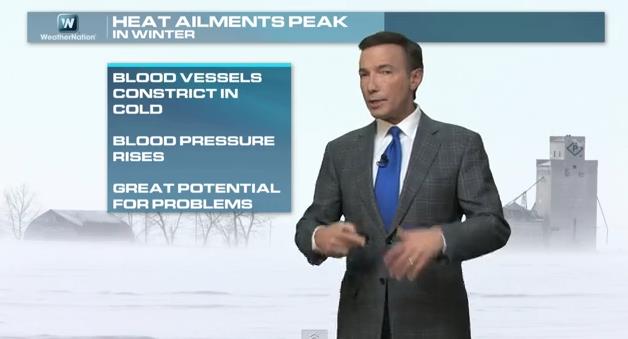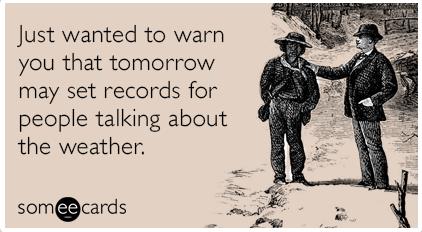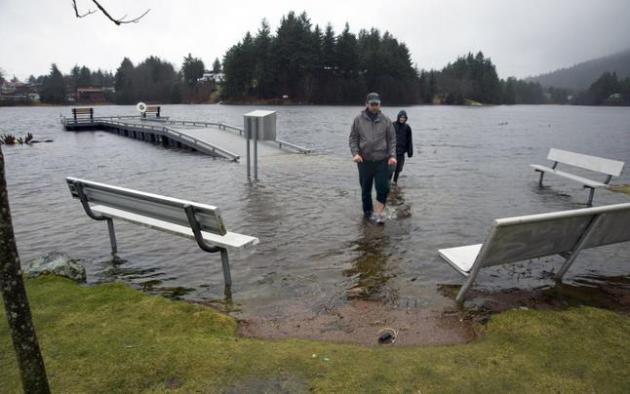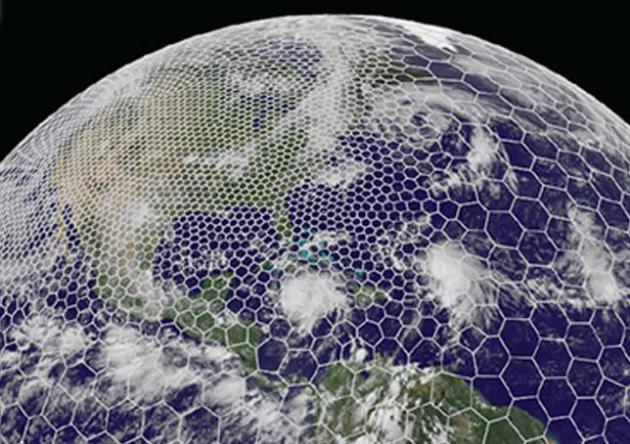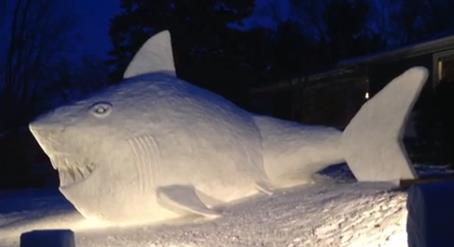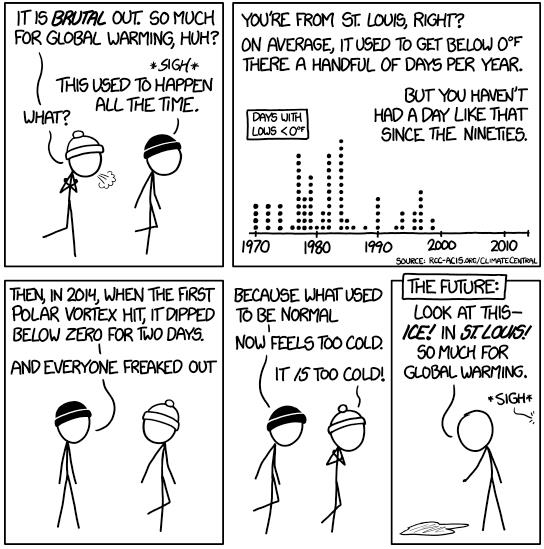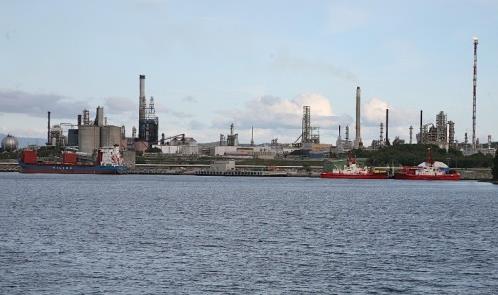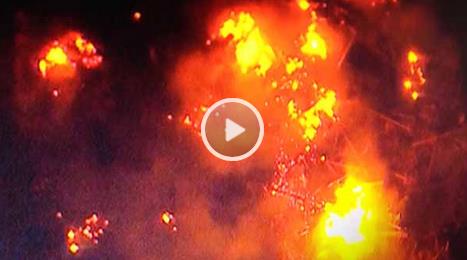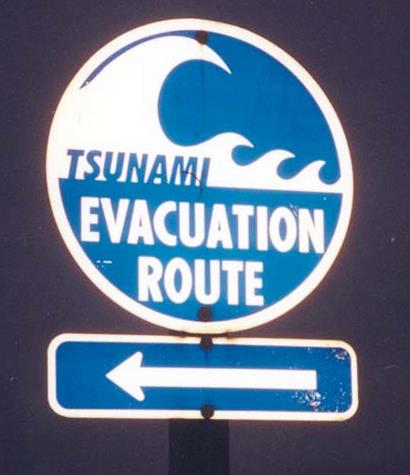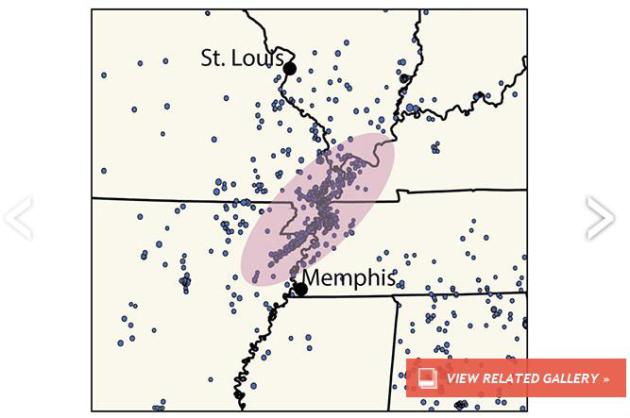Stuck
Perhaps I'm imagining this. It could be a weather-hallucination, brought on by years of standing too close to The Doppler.
A
handful of scientists have theorized that rapid warming of the Arctic
is impacting the configuration & speed of the jet stream over North
America. More warming farther north = lower winds speeds; more waviness,
more big kinks in the steering winds.
It's just a theory, but I
could swear I'm seeing evidence of this on the weather maps. The
weather, increasingly, seems to be getting stuck - patterns stalling for
extended periods of time.
When the weather machine goes into
neutral bad things can happen: biblical floods in Boulder,
super-droughts in California, and our 2-month cold wave.
The
truth: meteorologists have been tracking the "Polar Vortex" since the
60s; every now and then chunks of air over the North Pole break off and
dive into the USA. What's unusual is the sheer persistence of this
pattern.
Prepare for even more family togetherness. The next cold
wave sparks 1-2 inches snow tonight; temperatures tumble Sunday,
reaching potentially school-closing levels Monday. Monday's high? -10F.
We wake up to -22F Tuesday with a windchill of -45F.
Ouch.
* Monday temperature anomalies above courtesy of Climate Reanalyzer.
Blizzard Watch West Of The MSP Metro.
If your travels take you west of 7, 12 or I-94, travel conditions will
get progressively worse out in open country just 30-60 miles west of
town on Sunday. Not so much in the way of falling snow, but highs winds
kicking up snow on the ground, creating ground-blizzard conditions.
Details from NOAA:
...BLIZZARD CONDITIONS POSSIBLE SUNDAY AND SUNDAY EVENING...
BLIZZARD CONDITIONS ARE POSSIBLE OVER MUCH OF WEST CENTRAL...
CENTRAL... AND SOUTH CENTRAL MINNESOTA SUNDAY AND SUNDAY EVENING.
A BLIZZARD WATCH HAS BEEN ISSUED... AND IS IN EFFECT FROM SUNDAY
MORNING THROUGH SUNDAY EVENING... FOR LOCATIONS GENERALLY ALONG
AND SOUTHWEST OF A LINE FROM LONG PRAIRIE THROUGH LITCHFIELD AND
SAINT PETER TO OWATONNA. A PERIOD OF SNOW WILL OCCUR SATURDAY
NIGHT PRIOR TO THE DEVELOPMENT OF BLIZZARD CONDITIONS... WITH
2 TO 4 INCHES OF ACCUMULATION EXPECTED. ALTHOUGH SNOWFALL WILL
DIMINISH ON SUNDAY... WITH MAINLY SNOW SHOWERS OR FLURRIES...
NORTHWEST WINDS WILL INCREASE TO 25 TO 35 MPH WITH GUSTS TO
50 MPH BY SUNDAY AFTERNOON. THE STRONG WINDS COULD CREATE
BLIZZARD CONDITIONS DUE TO BLOWING AND DRIFTING SNOW. WINDS WILL
DIMINISH BELOW 20 MPH AFTER MIDNIGHT SUNDAY NIGHT... WHICH WILL
ALLOW CONDITIONS TO IMPROVE SOME... ALTHOUGH AREAS OF BLOWING AND
DRIFTING SNOW WILL PERSIST INTO MONDAY.
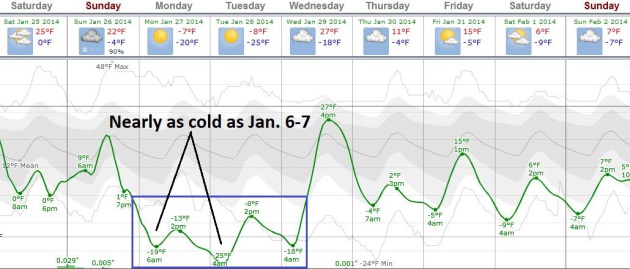
An Acquired Taste.
Monday-Tuesday may rival the level of ridiculous cold we experienced
January 6-7, probably cold enough to close (many, if not all) schools
Monday, possibly Tuesday as well. Overall Monday will be the coldest day
with the greatest risk of frostbite, due to strong winds coupled with
temperatures in the -10 to -20F range, making it feel like -45F in the
metro, -55F in greater Minnesota. Tuesday morning should be the coldest
morning, but winds ease a bit Tuesday, so the chill factor may not be
quite as dangerous. The first week of February looks cold, but not as
polar as the first few days of next week. Graphic: Weatherspark.
Lightning Strikes Twice.
A couple weeks ago I speculated that the January 6-8 outbreak would be
the coldest of winter. I'm not as sure today. Next Monday will come
close to rivaling the extremes of January 6, when we woke up to -23F
with a "high" of -12. Within a couple degrees. For all intents and
purposes it will probably be AS COLD as it was early in the month.
January data: Minnesota Climatology Working Group.
Running Out Of Colors.
It's so cold the color table drops off at -20F. By Sunday the core of
the Polar Vortex (I get a dollar every time I use that expression)
pushes south out of Canada, subzero Monday and Tuesday from the Upper
Mississippi Valley into the Great Lakes. Spring is nowhere in sight. NAM
84-hour 2-meter temperatures from NOAA and Ham Weather.
Flakes in New Orleans?
A rhetorical question, I know, but yes, a little slush is possible as
far south as Galveston and The Big Easy. The heaviest snows fall on the
snow belts downwind of the Great Lakes.
Dangers Beyond Frostbite.
Although heat claims more lives in the USA than winter cold,
consistently low temperatures constrict blood vessels and increase blood
pressure, increasing the potential for heart-related ailments,
including heart attack. Today's edition of Climate Matters includes a
look at how (and why) the pattern has been stuck for nearly 2 months,
and how the same holding pattern is impacting weather from Honolulu to
Sochi: "
It seems like the weather, increasingly, is getting stuck."
Meteorologist Paul Douglas explains this weather pattern that seems to
be stuck in a rut. Swells, drought and a polar vortex! Learn how it is
impacting everywhere from Hawaii/Alaska all the way to Europe. The
Winter Olympics may feel more like the Summer Olympics!"
January School Closings May Lead To Makeup Days In June. I have a strong hunch that most Minnesota schools will close again Monday, probably Tuesday of next week. Kids should enjoy their days off now, because there won't be much celebrating in June, according to a story at
The Star Tribune; here's a clip: "
Can’t
bear the thought of another snow day? Find the scroll of school
closings painful to watch? Just wait until summer arrives and Minnesota
schools are still in session. Some school officials are contemplating
scheduling makeup days in June as their school calendars are on the
verge of being blown up by a particularly bitter winter. Teachers and
parents also have found their best-laid plans badly buffeted. Most Twin
Cities metro area schools have canceled classes for three days this
month, and Monday’s forecast of 5 below zero makes a four-peat appear
possible..."
Freak Rains In Alaska.
Looking to thaw out - head to Anchorage, or even Fairbanks, where a
freakish late January rain froze on surfaces Thursday. Here's a clip
from a story at
Anchorage Daily News: "...
Organizers
have canceled the Northern Lights 300 sled dog race slated to start
Friday in Big Lake because of unfavorable weather and trail conditions,
according to the race’s website.
The 300-mile race trail begins in Big Lake, goes to Finger Lake and
loops back around. It’s an Iditarod and Yukon Quest qualifier. Freezing
rain iced roads and tangled transportation in Fairbanks on Thursday as
warmer weather blasted usually frigid Interior Alaska..."
File photo above: "
Matt
Goff and his daughter Rowan check out a flooded Swan Lake Tuesday, Jan.
14, 2014, in Sitka, Alaska. The Goffs were spending the day looking at
flooded sites around town. More than 4.5 inches of rain fell in a
24-hour period." (AP Photo/Daily Sitka Sentinel, James Poulson).
Read more here: http://www.adn.com/2014/01/23/3287457/some-mat-su-schools-closed-as.html#storylink=cpy
Predicting Super Bowl Snow Is An Epic Forecasting Challenge.
LiveScience
does an admirable job tackling the complexities and impossibilities of a
2-week weather forecast (for a specific point, like The Meadowlands in
New Jersey). Here's an excerpt: "...
This suggests that no one should
put too much stock in any single prediction two weeks out. Even the
official NWS local forecasts that go out seven days need to be viewed
with some caution at the far end, since their skill is little better
than climatology at that point.In other words, the average high, low and
precipitation amounts observed on February 2 over the last 30 years may
come nearly as close to being correct as a typical weather forecast
issued seven days beforehand. It's also important to distinguish between
"skill" and "accuracy."
One could offer a firm prediction of "no snow" a month in advance of
the Super Bowl, and chances are greater than 80 percent that the
forecast would be correct — but not necessarily skillful..."
Image credit above: "
The
variable-mesh MPAS grid can be customized to feature higher resolution
where added detail is desired, as illustrated here for North America." Courtesy MPAS.
Hundred Years Of Dry: How California's Drought Could Get Much, Much Worse.
Time Magazine
provides some historical perspective for the deepening drought
afflicting California and the West Coast; here's an excerpt: "...
Californians
need to be ready, because if some scientists are right, this drought
could be worse than anything the state has experienced in centuries. B.
Lynn Ingram, a paleoclimatologist at the University of California,
Berkeley, has looked at rings of old trees in the state, which helps
scientists gauge precipitation levels going back hundreds of years.
(Wide tree rings indicate years of substantial growth and therefore
healthy rainfall, while narrow rings indicate years of little growth and
very dry weather.) She believes
that California hasn’t been this dry since 1580, around the time the
English privateer Sir Francis Drake first visited the state’s coast..."
Photo credit above: "
A
marina on Lake Folsom sits dry and useless as an unseasonably dry
winter in California stokes fears of a severe drought, near Folsom,
Calif., Jan. 15, 2014. Governor Jerry Brown declared a drought emergency
on Friday, which will allow California to seek federal aid as it
grapples with what could turn out to be the driest year in recorded
state history for many areas." (Max Whittaker/The New York Times)
California Drought Spurs Some Cities - Not All - To Conserve.
Climate Central
weighs in on a deepening sense of crisis in California. With a little
luck the rains will arrive in the coming weeks, but by then it may be
too little too late. Here's a clip: "
Californians are hoping big
rains will relieve the drought emergency declared in the state last
week. It could be in the form of a miracle March rainstorm, or a sudden
drastic shift in the weather pattern that is keeping the winter rains
away. The state is drying up quickly,
but cities across the state are responding to the drought in a variety
of ways — from imposing water restrictions immediately to doing nothing
at all. Though scientists aren’t yet certain if climate change has contributed to the severity of the drought in California, the state just experienced its driest year on record
in 2013 after an extremely dry decade with no end to the dry spell in
sight. A persistent high pressure ridge is lingering off the West Coast,
deflecting California’s typical winter storms away from the state..."
Photo credit above: "
A panoramic view of an extremely low Folsom Lake in Northern California in January."
Credit: Stuart Rankin/flickr.
Rare Winter Wildfires Erupt In Northern Coast Range. Unusual for late January? Absolutely. KGW.com in Portland, Oregon has the story and video; here's a clip: "Rare
winter wildfires in the Coast Range, visible from as far as 20 miles
away, continued to burn early Friday morning east of Arch Cape. The
first was reported about 3 p.m. Thursday and second one about midnight
south of the original fire, according to Seaside police. A Forestry
official told KGW Friday morning that the first fire was about 25 acres
and the second about 100 acres..."
Researchers Digging Into Data On Quiet Hurricane Season.
Last year's hurricane prediction was a bust - it was the quietest year
in the Atlantic since 1982. What happened, and can a long-range
hurricane forecast even be trusted? Here's a clip from a story at
The Coloradoan: "...
Gray
and Klotzbach believe a significant cooling of waters in the eastern
Atlantic associated with a weakening of the thermohaline circulation --
or the Atlantic Multidecadal Oscillation -- in the spring months was the
primary reason for the inactivity. But there are significant
disagreements between historical datasets about the conditions of the
atmosphere during the June-November hurricane season..."
Graphic above:
RMS.com.
Tsunami Alert.
Russia's Emergency Ministry is predicting a significant
earthquake/tsunami later this year off Sakhalin Island, in the far east.
When did anyone start predicting quakes and tidal waves months in
advance? Details from
turkishweekly.net. What, you don't read this on a regular basis? And yes, I need some new hobbies...
Large Fault Zone Still A Threat To Central U.S.
One of these days the New Madrid fault will rupture, and people will
wonder why nobody was talking about the threat. Here's an excerpt of a
good reminder from
Discovery News: "
More
than a century ago in December of 1811 and January of 1812, residents
in the 600,000 square kilometers around New Madrid, Mo., suffered
damages from some of the most powerful earthquakes in United States
history. Seismologists recently warned that the New Madrid fault
didn’t die and still threatens the area where Missouri, Illinois,
Kentucky, Tennessee and Arkansas meet. During those 19th century New
Madrid fault quakes, buildings suffered damage as far away as St. Louis
and Cincinnati. As the ground fell out from underneath the Mississippi
River, waves swept northward, creating the illusion that the river had
reversed its course and whole islands disappeared. Closer to the
epicenter of the quake, sand erupted from the ground, which dropped up
to 6 meters in places..."
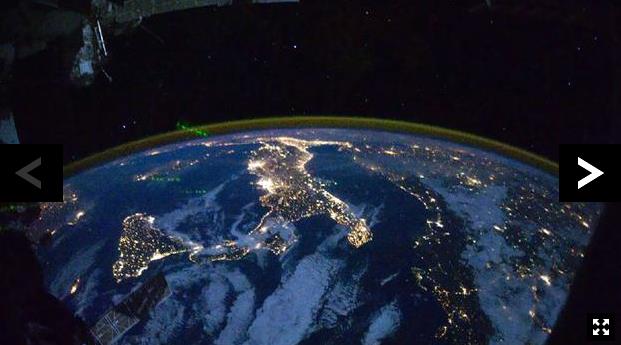
The Last Place On Earth Without Human Noise. Greenland? Antarctica? Good luck finding a remote spot with zero noise pollution, according to this story at
The BBC.
One hint: Minnesota's Boundary Waters Canoe Area is near the top of the
Quiet List, so we have that going for us. Here's an excerpt: "...
Unfortunately,
Hempton says that there is absolutely no place on Earth that is
completely free from human sound all of the time. A map of the
established flight paths over the US, for example, “looks like a plate
of spaghetti,” he says. Hempton is not alone in this pronouncement.
“There are no places on Earth that I’ve been that haven’t been affected
by human sound,” agrees Bernie Krause, an expert in bioacoustics and one
of the founders of the field of soundscape ecology. “All over the Earth, not a day goes by when you don’t hear something...”
Image credit above: "
Satellite imagery of artificial light, like this picture of Italy, can reveal the human activity you might want to avoid." (NASA).
The Geography Of The American Dream.
The Atlantic
takes a look at upward mobility and where, statistically, the most
people are getting closer to that dream; here's an excerpt: "
One of the most important lessons from today's blockbuster social mobility report is that place matters. (And, because your parents choose the place where you're born and live, parents matter.)
Tucked into the appendix are two colorful maps of America that tell you
where social mobility—the chance to move up the income ladder, a.k.a.
The American Dream—is living and where it's not. First, the graphs.
Then, five facts..."
A Death In The Database.
As I gently remind my friends and colleagues, if the product is "free",
YOU are the product. Here's an excerpt of a shocking and sobering tale
from
The New Yorker: "...
Segmenting
potential customers based on their traumas is the funhouse-mirror
inversion of a popular retail strategy known as “life-stage marketing.”
The idea is that during certain transitions—weddings, births, new
homes—people will spend a lot of money, obviously, but will also be
especially open to changing their habits. Crate & Barrel hosts
engagement parties not only to persuade couples to register at its
stores but to build new brand loyalties. Companies race to be the first
to find these lucrative shoppers, which is how Target got in trouble
several years ago for revealing that a teen-age girl was pregnant before she had told her father..."
C'mon Kids - Let's Go See The Creepy Robots That May Someday Take Your Jobs! Remind me not to visit South Korea anytime soon, and I suspect Disneyworld has nothing to worry about. Here's a clip from
Gizmag: "
Since
2007, the South Korean government has dreamed of Robot Land, a robotics
research park and themed destination with rides, exhibitions, shopping,
and even housing. Although the originally planned open date of 2012 has
come and gone, ground was officially broken for the 300-acre park last
year and a new timeline seems to indicate that Robot Land may now be on
target to deliver on its promise of a themed world dedicated to robots..."
What Reviewers Said About The First Mac When It Debuted 30 Years Ago.
It's been 30 years? Amazing, and now I'd be lost without my iMac and
iPhone and iPad. I should get an iLife huh? Here's a clip of a great
recap of that audacious moment from
Smithsonian: "
Nearly
thirty years ago, on January 24, 1984, a 28-year-old Steve Jobs
appeared onstage in a tuxedo to introduce a new Apple computer that had
been in the works for years: the Macintosh. Two days earlier, during the third quarter of Super Bowl XVIII, Apple aired a commercial
that brought already-high expectations for the Mac to a fever pitch. In
the ad, a nameless heroine runs through a dystopian setting, where
a face projected onto an enormous screen commands a room full of
conformists to obey. Evading police in riot gear, the heroine smashes
the screen with a giant hammer, freeing the audience. The message: IBM
was 1984's Big Brother, and Mac was the audacious liberator..."
Giving New Meaning To "Great White Shark". In case you (somehow) missed this nugget, Rick
Kupchella's BringMeTheNews.com has a great recap and video of the amazing artistry going on up in New Brighton; here's a clip: "
The
Bartz brothers of New Brighton have completed their latest snow
sculpture masterpiece – a giant shark that fills their front yard. Now
the teens are getting national attention for the feat. The Today show
featured the story on Monday, noting that the three teens – Connor,
Trevor and Austin – said they spent more than 90 hours creating the
massive snow sculpture – and it beat spending time on their cellphones..."
Address: if you want to check it out head to 2700 block of 16th Street Northwest in New Brighton; it's near Totino Grace.
Climate Stories...
"
Emissions
have gone up faster than I thought and some of the effects of global
warming are coming through more quickly, such as melting of the glaciers
and the polar ice caps." -
Lord Stern, The Guardian
Perspective. Cartoon courtesy of
XKCD.com.
Soon, Sochi Won't Be Cold Enough To Reliably Host The Winter Olympics. Here's a snippet of a story at
ThinkProgress: "
If
the Winter Olympics were held in Sochi, Russia in 2050, the climate
wouldn’t be reliably cold enough to successfully host the games. That’s
one of the findings of a new study
from researchers at the University of Waterloo in Canada and the
Management Center Innsbruck in Austria. The researchers looked at high
and low emissions scenarios for the 2050s and 2080s and found that, by
the 2080s, only six of the 19 cities that have hosted Winter Olympics in
the past would be able to reliably host the games again if high
emissions predictions play out..."
Photo credit above: AP Photo/Marco Trovati.
Climate Change Threatens Future Winter Olympics Venues. Here's an excerpt of a story at Canada's
CBC News: "
Memorable
host cities for the Winter Olympics wouldn’t have a snowball’s chance
of reliably hosting a Games in the next few decades amid climate
change, according to a new report.
At the rate the Earth continues to heat up, only six of the last 19
Winter Olympics locations would be cold enough by the end of this
century to stage the Games, the joint Canadian-Austrian study says. A
new joint study from Canadian and Austrian researchers says that amid
climate change, only 11 of the previous 19 sites for Winter Olympics
could host the Games in the coming decades..."
Photo credit above: "
Global
warming is progressing at such a rate that scientists say many previous
sites of Winter Olympics would be too warm to host a Winter Games by
the last half of this century." (Dominic Ebenbichler/Reuters).
Climate Change: The Winter Olympics' Great Thaw. Climate Central
has a unique perspective on some of the new methods and technologies
cities and countries are employing to counter warming winter
temperatures for their Winter Olympics Games; here's an excerpt of the
story: "...
In 1952, hockey was moved to indoor rinks permanently
with figuring skating and curling following suit in 1960. Refrigeration
was added to bobsled tracks in 1972 and ski jumping ramps in 2010.
Snowmaking for downhill skiing events became commonplace in 1992. This
year, organizers of the Sochi Olympics have taken even more drastic
steps to ensure the outdoor events go off without a hitch. “One thing
Sochi is doing differently in their adaptation arsenal is they made snow
last winter and stored it under tarps, in the same way some Swiss
places have been protecting their glaciers,” he said..."
File photo above: "
In
this Wednesday, Sept. 25, 2013 file photo insulated blankets cover a
snow storage unit in the Rosa Khutor Alpine center in the mountain
cluster in Krasnaya Polyana outside the Black Sea resort of Sochi,
Russia. Sochi will have enough snow for the Winter Olympics in February,
Russia's chief weather forecaster vowed Friday. Concerns about a
snowless Olympics were raised after two test events in Sochi had to be
cancelled last February because of a lack of snow or rainy weather. The
resort city on the Black Sea is the only sub-tropical region of Russia." (AP Photo/Sergei Grits, File).
Industry Awakens To Threat Of Climate Change.
When it starts showing up on the top line, or bottom line, many
companies are quickly getting past climate denial and trying to figure
out viable strategies for dealing with increased climate volatility in
their supply chains. Here's a clip from
The New York Times: "
Coca-Cola
has always been more focused on its economic bottom line than on global
warming, but when the company lost a lucrative operating license in
India because of a serious water shortage there in 2004, things began to
change. Today, after a decade of increasing damage to Coke’s balance
sheet as global droughts dried up the water needed to produce its soda,
the company has embraced the idea of climate change as an economically
disruptive force. “Increased droughts, more unpredictable variability,
100-year floods every two years,” said Jeffrey Seabright, Coke’s vice
president for environment and water resources, listing the problems that
he said were also disrupting the company’s supply of sugar cane and
sugar beets, as well as citrus for its fruit juices. “When we look at
our most essential ingredients, we see those events as threats...”
Photo credit above: "A Coke bottling plant in Winona, Minn. The company has been affected by global droughts." Andrew Link/Winona Daily News, via Associated Press.
More Global Warming Will Be Worse For The Economy, Says The Copenhagen Consensus Center. Here's a clip from an article at The Guardian: "The Copenhagen Consensus Center (oddly, located in Massachusetts)
is a think tank headed by Bjorn Lomborg that advocates for what they
consider "the best ways for governments and philanthropists to spend aid
and development money." The group recently released a report that attempts to quantify the economic damage caused by various global problems, including climate change. Regarding climate change and its costs, the group states,
"Climate
change is real and man-made ... After year 2070, global warming will
become a net cost to the world, justifying cost-effective climate
action."
Image credit above: "
Bjorn Lomborg leads the Copenhangen Consensus Center, which has concluded that more global warming will be worse for the economy." Photograph: Camera Press.

Backers: Report On Rail Risks Boosts Keystone XL. Because there have never (ever) been any pipeline-related spills, right? Here's an excerpt of a story from AP and
ABC News: "
A
government warning about the dangers of increased use of trains to
transport crude oil is giving a boost to supporters of the long-delayed
Keystone XL pipeline. U.S. and Canadian accident investigators urged
their governments Thursday to impose new safety rules on so-called oil
trains, warning that a "major loss of life" could result from an
accident involving the increasing use of trains to transport large
amounts of crude oil. Pipeline supporters said the unusual joint warning
by the U.S. National Transportation Safety Board and the Transportation
Safety Board of Canada highlights the need for Keystone XL, which would
carry oil derived from tar sands in western Canada to refineries on the
U.S. Gulf Coast. Oil started flowing Wednesday through a southern leg
of the pipeline from Oklahoma to the Houston region..."
File photo credit: "
In
the is Oct. 4, 2012 file photo, large sections of pipe are shown on a
neighboring property to Julia Trigg Crawford family farm, in Sumner
Texas. On Wednesday, Jan 22, 2014, TransCanada said in a statement on
its website that it is delivering oil through the Gulf Coast portion of
its proposed Keystone XL pipeline, from a hub in Cushing, Okla., to
Houston-area refineries." (AP Photo/Tony Gutierrez, file).
NTSB Urges Oil Trains Be Routed Away From Population Centers.
There were more rail-related accidents involving transporation of oil
in 2013 than the previous 37 years, nationwide. Here's a clip from a
story at
The Star Tribune: "
The
National Transportation Safety Board (NTSB) expressed growing concern
Thursday that accidents involving oil trains can cause “major loss of
life,” and recommended that they be rerouted where possible to avoid
populated areas. The safety board’s proposal, a direct response to last
July’s oil train disaster in Quebec, reverberates in the Twin Cities,
where 100-car crude oil trains have become a common occurrence. But
diverting oil tankers away from cities, especially historic rail hubs
such as Minneapolis and St. Paul, represents a daunting challenge because most major tracks pass through urban areas..."
Photo credit above: "National Transportation Safety Board member Robert Sumwalt, right, views damaged rail cars in Casselton, N.D."
The Norwegian Carbon Capture And Storage Nightmare.
Will we someday invent technologies to render carbon pollution
harmless, turn it into an inert gas, or bury it (forever) in the ground?
Perhaps - but it hasn't happened yet, nothing that can be scaled.
Here's a clip from a cautionary tale in Norway from
The Foreigner: "...
In
my perspective, the project was doomed to fail from the beginning. It
was never true that effective CCS technology was readily available, no
more in 2006 than today. Well-working carbon capture and storage that
actually benefits the climate requires cost and energy-efficient carbon
capture, efficient transport of the CO2, and safe storage. Furthermore,
every part of this chain needs to be working well with the others at an
industrial scale. None of this was present then, none of it is present
now..."
Image credit above: "The only remaining trace of the "Norwegian Moon Landing" is a very big pile of documents." Photo: Nina Aldin Thune/Wikimedia Commons.
* more on carbon capture and storage technologies from Joe Romm at
ThinkProgress.

